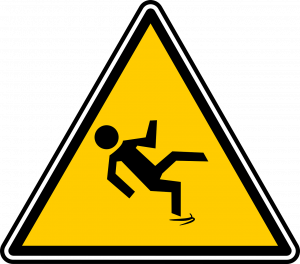 Slip, trip, and fall cases can result in serious injuries. Unfortunately, it can sometimes be difficult to determine whether you have a claim, and there are numerous factual issues that will need to be decided. If you have been injured on someone else’s property, you should speak with an experienced premises liability attorney about whether you can recover compensation for your injuries.
Slip, trip, and fall cases can result in serious injuries. Unfortunately, it can sometimes be difficult to determine whether you have a claim, and there are numerous factual issues that will need to be decided. If you have been injured on someone else’s property, you should speak with an experienced premises liability attorney about whether you can recover compensation for your injuries.
Were You Injured?
This may seem obvious, but you need to have suffered an injury in order to recover compensation. The incident may have been aggravating or stressful, but unless you were physically injured, it’s likely going to be very difficult to pursue a claim.
Where Were You Injured?
Where you were injured is an important element of your claim because it will determine who may be held liable for your injuries. If you were injured on private property, the owner of the property may be the party responsible for your injuries. If you were injured on public property, you will need to determine which governmental entity owns the property.
Was the Property Owner Negligent?
In order to pursue a slip-and-fall claim, you will need to prove that the property owner was negligent in maintaining their property, and that failure led to your injury. Here are some common examples of negligence in premises liability cases:
- A department store fails to make necessary repairs to its escalator, resulting in a malfunction that injures several customers.
- A hotel does not fix some loose carpeting in the lobby. An elderly guest trips over the carpeting and suffers serious injuries.
- An office complex does not treat the ice on its sidewalks, resulting in several falls and injuries.
As part of this analysis, you will need to determine whether the property owner knew or should have known that there was a hazardous condition on their property and failed to take action to address the situation.
Did the Property Owner Warn You of the Hazard?
In some situations, the property owner may not be able to fix the problem right away – it may take time to make repairs or it may be an issue that can be fixed. In those situations, the property owner can avoid liability if they warned guests, visitors, or customers of the hazardous condition. For example, a property owner may post a “wet floor” sign in the lobby of their building on a rainy day to warn visitors that the floor is slippery – there may not be much else they can do. Whether there were warnings and whether those warnings were sufficient will be critical facts as to whether you can pursue a claim.
Did You Have Permission to Be There?
Generally speaking, you cannot pursue a slip-and-fall claim if you were trespassing on the property. This extends to situations where you had permission to be on the property but were injured in a location that was closed to the public. Whether it was clear that you were trespassing or whether you had permission to be there will be critical issues.
Were You Injured in a Fall? Contact the Atlanta Slip and Fall Lawyers at Slappey & Sadd
Slip and fall cases are more complicated than you may think. Figuring out who is responsible, documenting and your injuries, and identifying the relevant facts can be quite challenging. You need someone on your side who knows the law and how to get you the compensation you deserve. If you’ve been injured on someone else’s property, contact the Georgia premises liability attorneys at Slappey & Sadd for a free consultation – call us today at 888-474-9616.
 Georgia Injury Lawyers Blog
Georgia Injury Lawyers Blog

